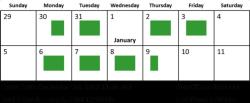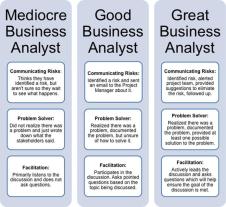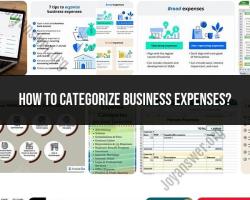What are the weaknesses of strategic planning?
While strategic planning is a valuable process for organizations to set goals, make informed decisions, and allocate resources effectively, it is not without its challenges and weaknesses. Identifying and addressing these weaknesses is crucial for organizations to enhance the effectiveness of their strategic planning efforts. Here are some common weaknesses in strategic planning:
Lack of Flexibility:
- Issue: Strategic plans are often designed to guide organizations over a set period, but they may become inflexible in the face of unexpected changes or disruptions.
- Impact: Rapid changes in the external environment may render the strategic plan obsolete, and organizations may struggle to adapt.
Overemphasis on Documentation:
- Issue: Some organizations focus too much on creating comprehensive strategic documents rather than emphasizing the implementation of the plan.
- Impact: A beautifully crafted plan may not lead to success if there is insufficient attention to execution and monitoring progress.
Resistance to Change:
- Issue: Employees or stakeholders may resist changes proposed in the strategic plan, leading to implementation challenges.
- Impact: Resistance can hinder the successful execution of the plan and prevent the organization from achieving its strategic objectives.
Inadequate Involvement of Stakeholders:
- Issue: If key stakeholders are not adequately involved in the strategic planning process, there may be a lack of commitment and support.
- Impact: Without buy-in from key stakeholders, it may be challenging to implement strategic initiatives successfully.
Poorly Defined Objectives:
- Issue: Strategic objectives that are vague, unclear, or not measurable can lead to confusion and difficulty in evaluating progress.
- Impact: Teams may struggle to align their efforts with poorly defined objectives, and it becomes challenging to determine the success of the strategic plan.
Failure to Monitor and Evaluate:
- Issue: Some organizations neglect the ongoing monitoring and evaluation of the strategic plan.
- Impact: Without regular assessment, it is difficult to identify whether the organization is on track to achieve its goals, and adjustments cannot be made in a timely manner.
Short-Term Focus:
- Issue: A strategic plan that prioritizes short-term gains over long-term sustainability may lead to missed opportunities and challenges in achieving a more comprehensive vision.
- Impact: Long-term success may be compromised in favor of immediate gains.
Ineffective Communication:
- Issue: Poor communication of the strategic plan to employees, stakeholders, or team members can lead to misunderstandings and lack of alignment.
- Impact: A lack of clarity and understanding can result in misalignment of efforts and hinder effective implementation.
Environmental Ignorance:
- Issue: Failure to adequately consider the external environment, including market trends, technological advancements, and regulatory changes.
- Impact: The strategic plan may not address emerging opportunities or threats, leading to suboptimal decision-making.
Inadequate Resource Allocation:
- Issue: Insufficient allocation of resources, including financial, human, or technological resources, can hinder the implementation of strategic initiatives.
- Impact: Without the necessary resources, organizations may struggle to execute their strategic plans effectively.
Addressing these weaknesses involves continuous improvement, adaptability, and a commitment to learning from both successes and failures in the strategic planning process. Regular reviews, open communication, and a willingness to adjust the plan when needed contribute to overcoming these challenges.
What are some recognized weaknesses or limitations of strategic planning processes?
While strategic planning is a valuable tool for organizations of all sizes, it is important to recognize its limitations and potential weaknesses. Here are some of the commonly identified weaknesses or limitations of strategic planning processes:
Overemphasis on Planning and Analysis: Strategic planning can sometimes lead to an overemphasis on planning and analysis, with less attention paid to implementation and action. This can create a "paralysis by analysis" situation, where organizations get stuck in planning mode and fail to take decisive action.
Lack of Flexibility and Adaptability: Strategic plans can sometimes become rigid and inflexible, failing to adapt to changing circumstances or new opportunities. Organizations need to be prepared to revisit and revise their strategic plans as needed to remain competitive and responsive to the environment.
Inadequate Communication and Buy-In: Strategic planning can fail if there is inadequate communication and buy-in from stakeholders throughout the organization. For a strategic plan to be successful, it needs to be understood, supported, and owned by all levels of the organization.
Disconnect from Day-to-Day Operations: Strategic planning can sometimes become disconnected from the day-to-day operations of the organization. It is important to ensure that the strategic plan is translated into actionable steps and that there is a clear link between the plan and the organization's daily activities.
Unrealistic Goals and Expectations: Strategic plans can set unrealistic goals and expectations, leading to frustration and disappointment when they are not achieved. It is important to set realistic and achievable goals that are aligned with the organization's resources and capabilities.
Lack of Measurement and Evaluation: Strategic planning can be ineffective if there is no clear system for measuring progress and evaluating the success of the plan. Organizations need to establish metrics to track their progress and make adjustments as needed.
Inability to Address Emergent Issues: Strategic planning can sometimes struggle to address emergent issues, which are unexpected challenges or opportunities that arise during the implementation of the plan. Organizations need to be prepared to adapt their strategies in response to unforeseen circumstances.
Overdependence on Consultants: Strategic planning can sometimes become overly reliant on external consultants, who may not have a deep understanding of the organization's culture and context. It is important to involve internal stakeholders in the planning process to ensure that the plan is grounded in the organization's reality.
Failure to Consider Long-Term Implications: Strategic planning can sometimes focus too heavily on short-term goals and objectives, failing to consider the long-term implications of the plan. Organizations need to balance short-term needs with long-term vision and sustainability.
Insufficient Resources for Implementation: Strategic planning can fail if there are not enough resources allocated to implement the plan. Organizations need to assess their resources and capabilities before embarking on a strategic planning process.













